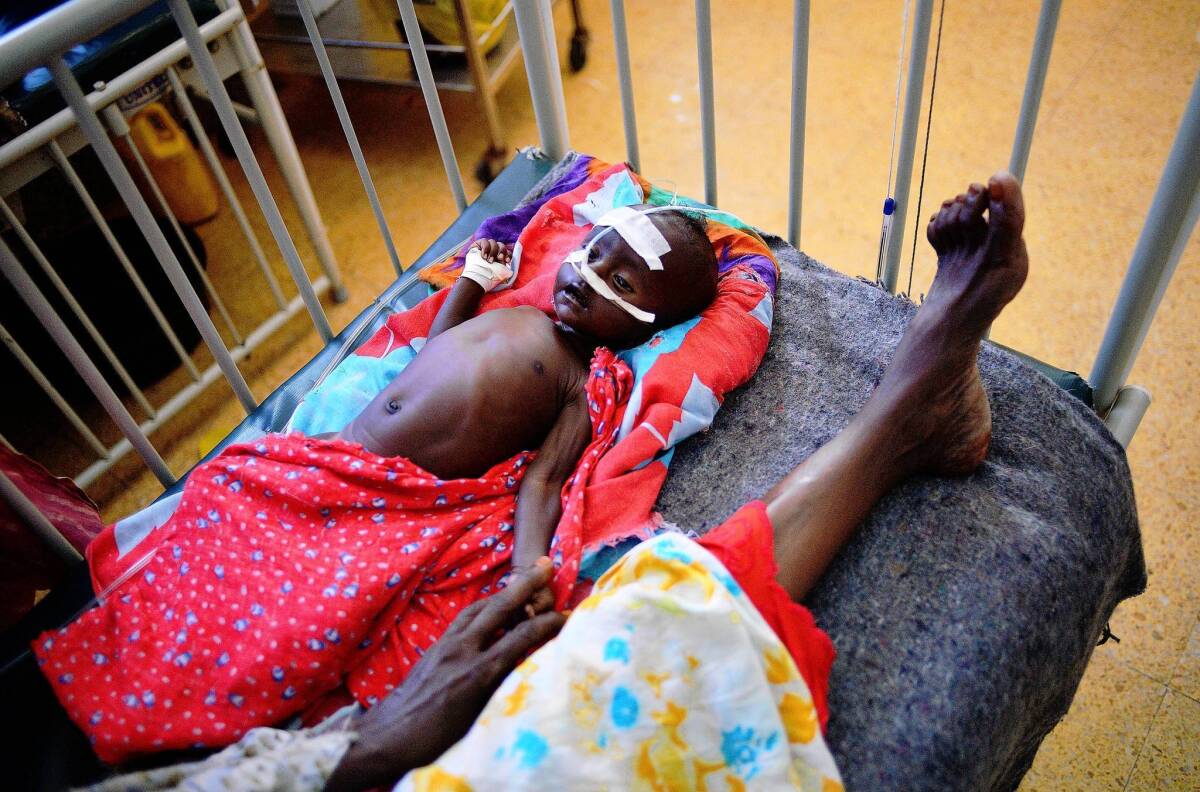U.S. policy seen as factor in Somalia famine deaths

- Share via
JOHANNESBURG, South Africa — It was the catastrophe everyone knew was coming yet no one seemed able to stop.
According to analysts, a violent Islamist militia was partly to blame for thousands of deaths in Somalia’s food crisis from 2010 to 2012, but so was U.S. anti-terrorism policy.
The effect of nations’ collective failure to grapple with the complex problems of getting aid into famine-stricken southern Somalia has only now been established: Nearly 260,000 people died, half of them children younger than 5, according to a report released Thursday by the U.S.-based Famine Early Warning System Network, or FEWS NET, and the United Nations Food and Agriculture Organization. The death toll, first reported early this week by the Associated Press, was double the worst estimates at the time.
The findings follow the first definitive scientific study on the effects of the food crisis, which found that 10% of children and 4.6% of the overall population in southern Somalia perished.
The FEWS NET warned of the impending disaster in 2010. The famine was declared in July 2011.
According to analysts, the deaths were caused by people and politics: the Islamist militia the Shabab, which denied humanitarian access to the hardest-hit areas and prevented starving people from leaving; local clan warlords, who stole food aid; and the transitional government in Mogadishu, the capital, whose officials diverted aid.
But American policy also played a considerable role, according to analysts, with the Shabab designated a terrorist organization by the U.S. in 2008. U.S. counter-terrorism law imposes sanctions on any group found to be offering even indirect assistance to a terrorist group. Some U.S. and international agencies halted aid deliveries to Shabab-controlled areas, fearing they could be charged with helping a designated terrorist group. In January 2010, the World Food Program suspended aid to southern Somalia, after reports that the Shabab was diverting supplies.
“The short answer — who was to blame — was that there was a syndrome of factors that together created very large problems of access,” Somalia expert Ken Menkhaus of Davidson College in North Carolina said in a phone interview. “It wasn’t one single factor.”
He said the suspension of WFP aid and the U.S. anti-terrorism measure had a “chilling effect” on other humanitarian organizations trying to respond to the Somali crisis. Some agencies, Menkhaus said, were afraid that their global reputations would be damaged if the Shabab ended up with their aid.
“Everyone wanted to get aid in,” he said. “But local aid diversion was endemic. One aid agency worker called southern Somalia ‘an accountability-free zone.’ You could not count on getting aid to the people who needed it most.”
Geno Teofilo, spokesman for Oxfam, said his agency believed that the international community put too much emphasis on security issues in the developing world and not enough on humanitarian crises.
“Oxfam believes that when there’s a conflict it doesn’t matter what side of the control line people are on,” Teofilo said in a telephone interview. “When they need food and people are dying of hunger, politics should not play a part. People should be able to receive humanitarian aid, wherever they are.”
Jeremy Konyndyk, director of policy for the humanitarian group Mercy Corps, which has worked in the Horn of Africa for many years, said the early warnings of the famine weren’t heeded quickly enough across the board.
Nongovernmental organizations “were too slow, the donors were too slow, the U.N. agencies were too slow to gear up,” he said. “I think everybody bears some responsibility for this.”
But he said humanitarian aid groups learned their lessons from Somalia and responded much more quickly and effectively during the food crisis in Africa’s Sahel region a year later.
Konyndyk said the humanitarian aid community was beginning to plan and act in advance to mitigate the effects of recurring famines by supporting peace-building, which enabled people to move more securely to other regions, or small businesses, which allow people to build up a financial cushion.
“The drought that hit the Horn of Africa that year was a once-in-60-years drought,” he said. “What happens if we get a once-in-100-years drought? I want to say [the 2011 famine] would never happen again. And I think the kinds of steps that are being taken make it less likely that it will happen again.”
More to Read
Sign up for Essential California
The most important California stories and recommendations in your inbox every morning.
You may occasionally receive promotional content from the Los Angeles Times.










